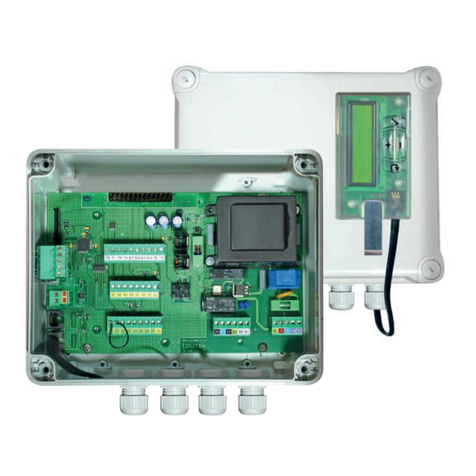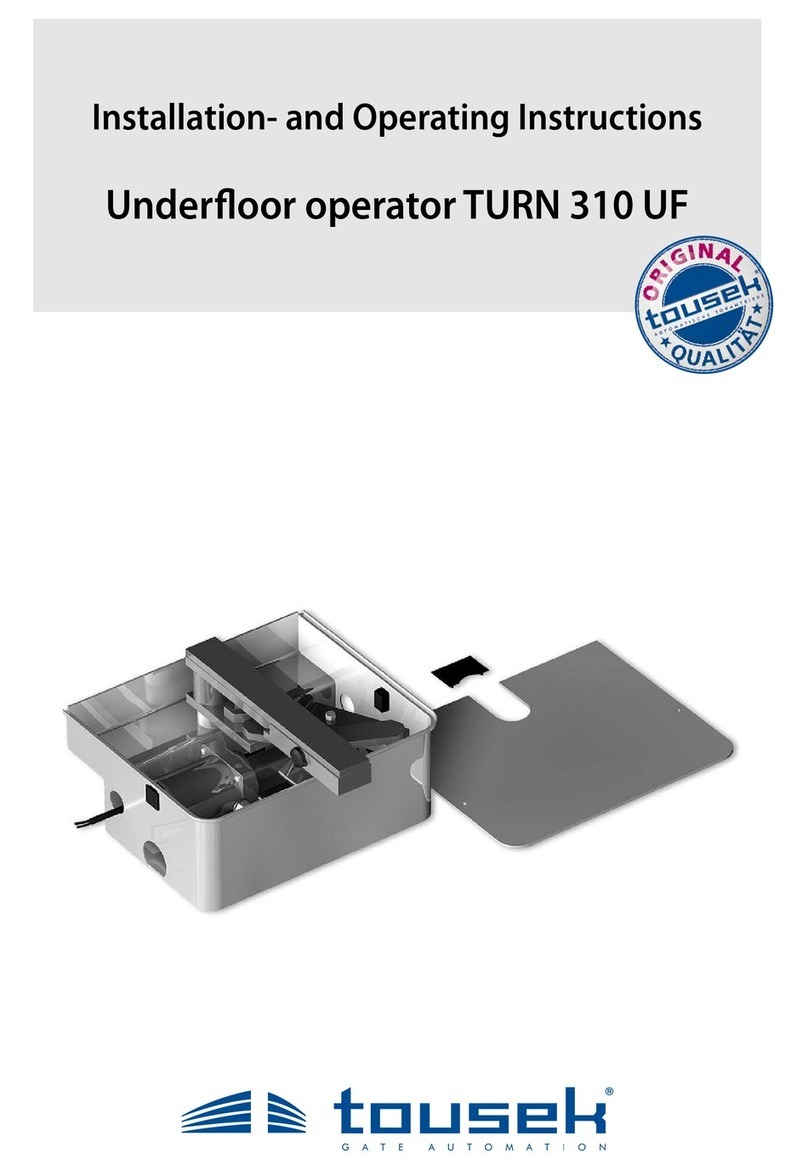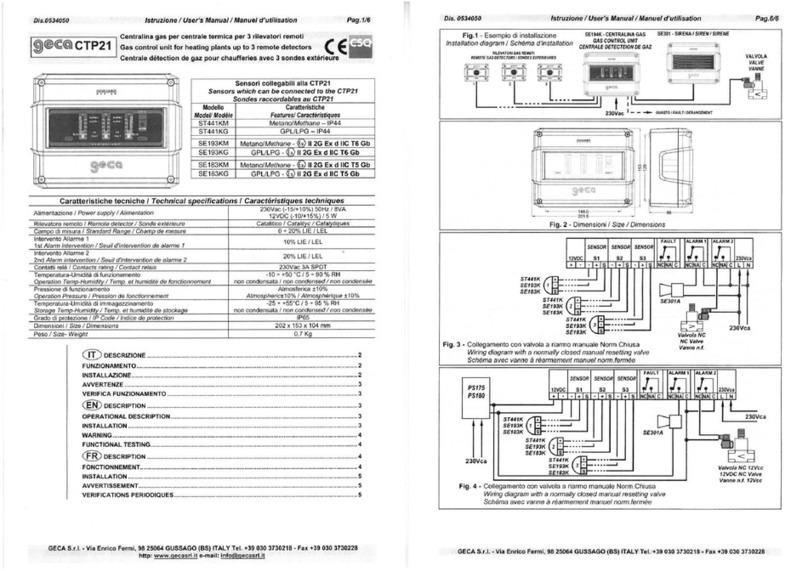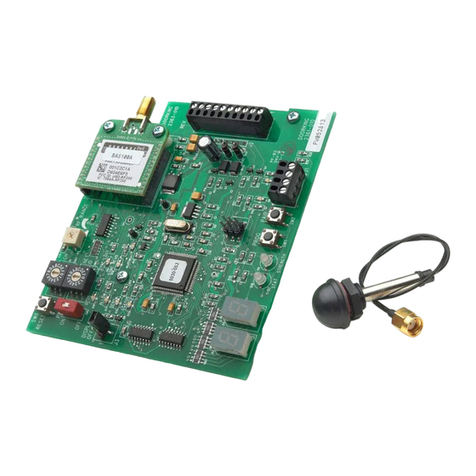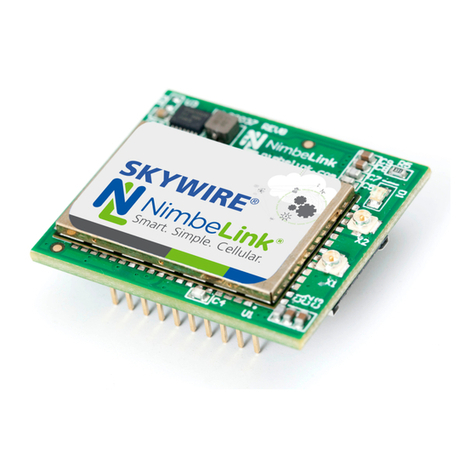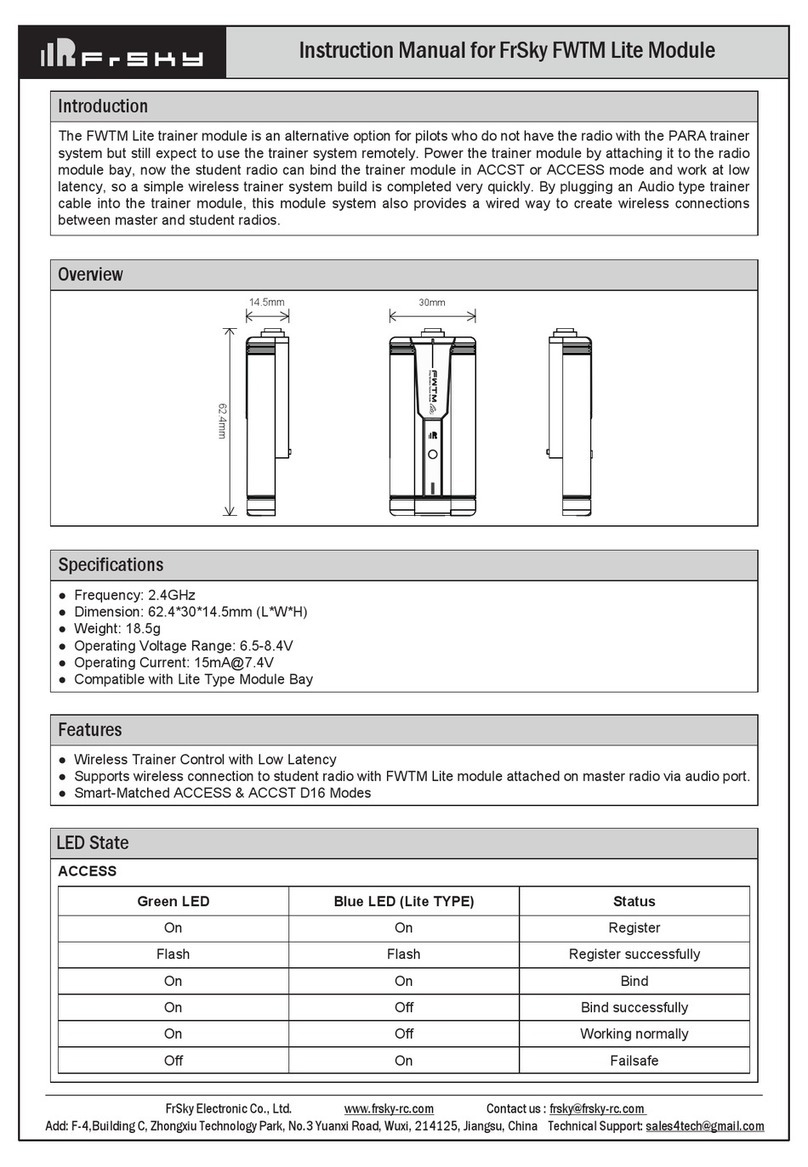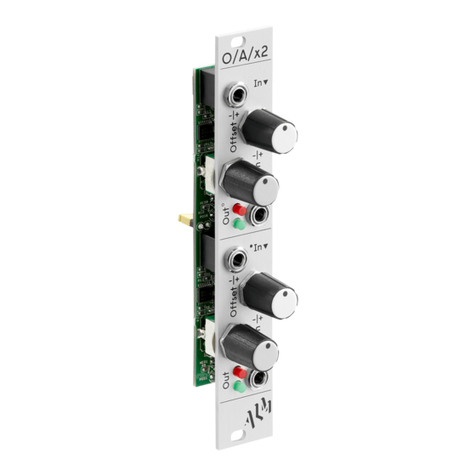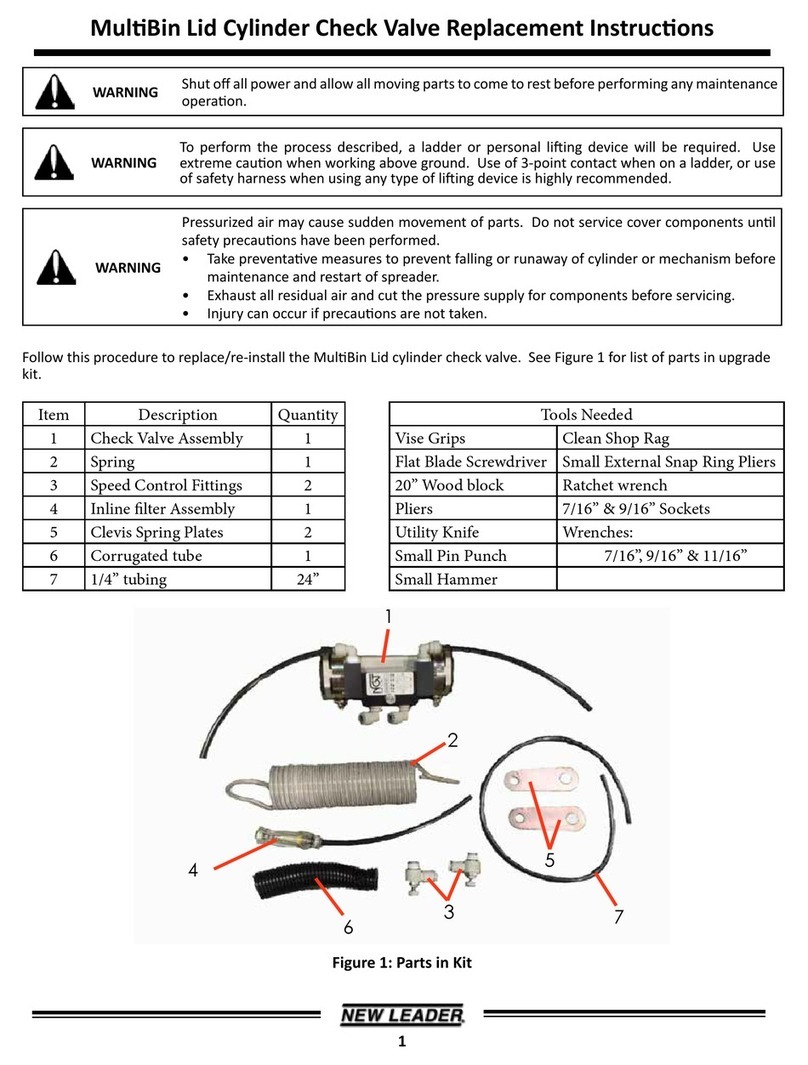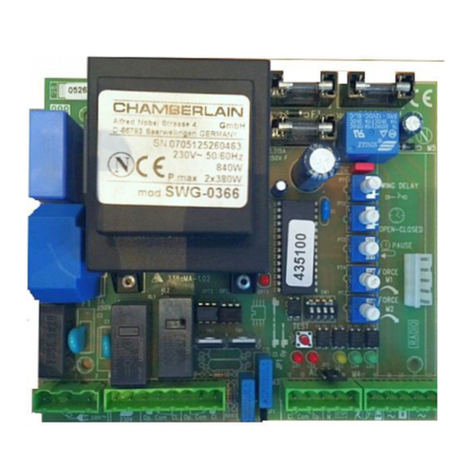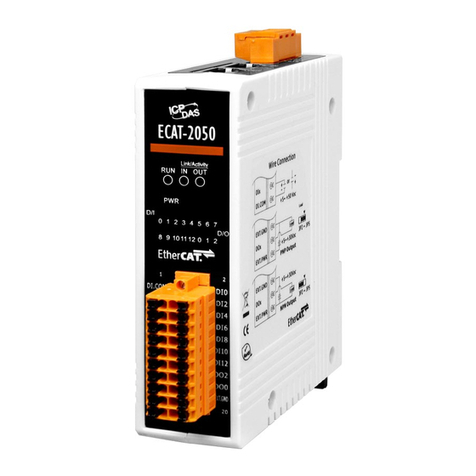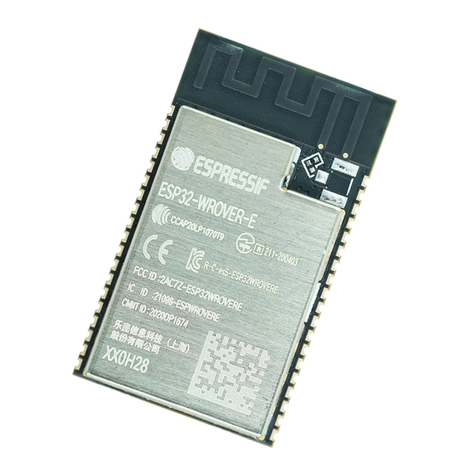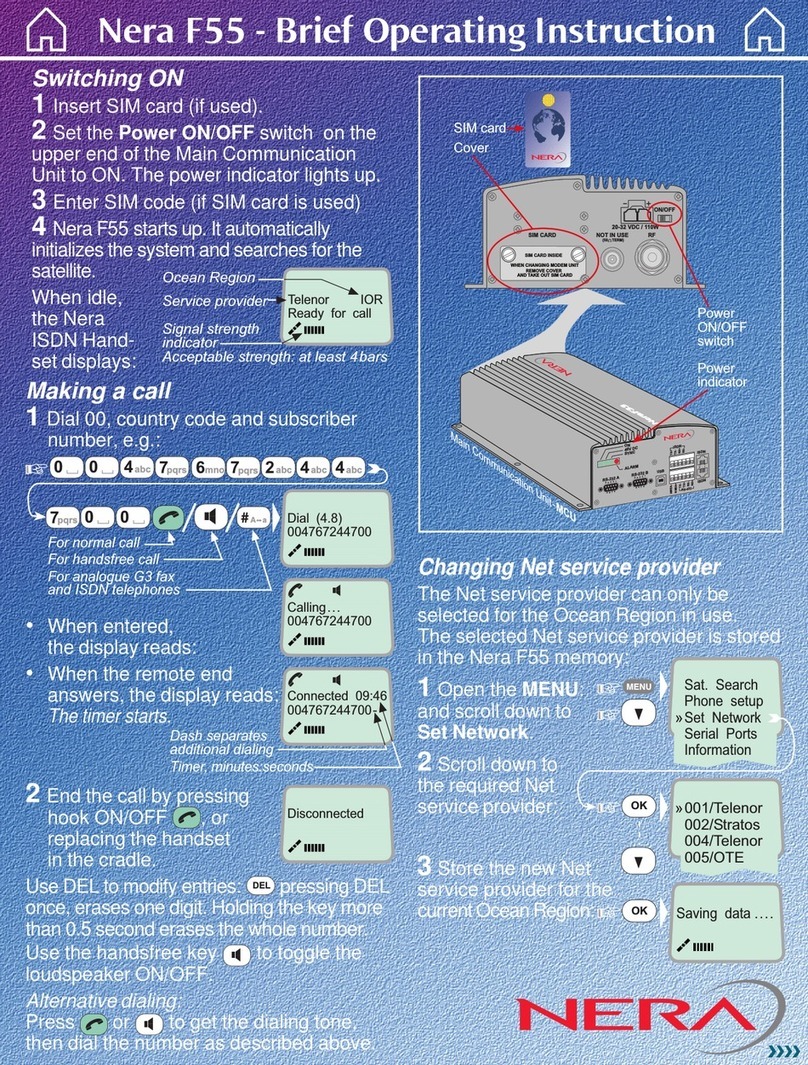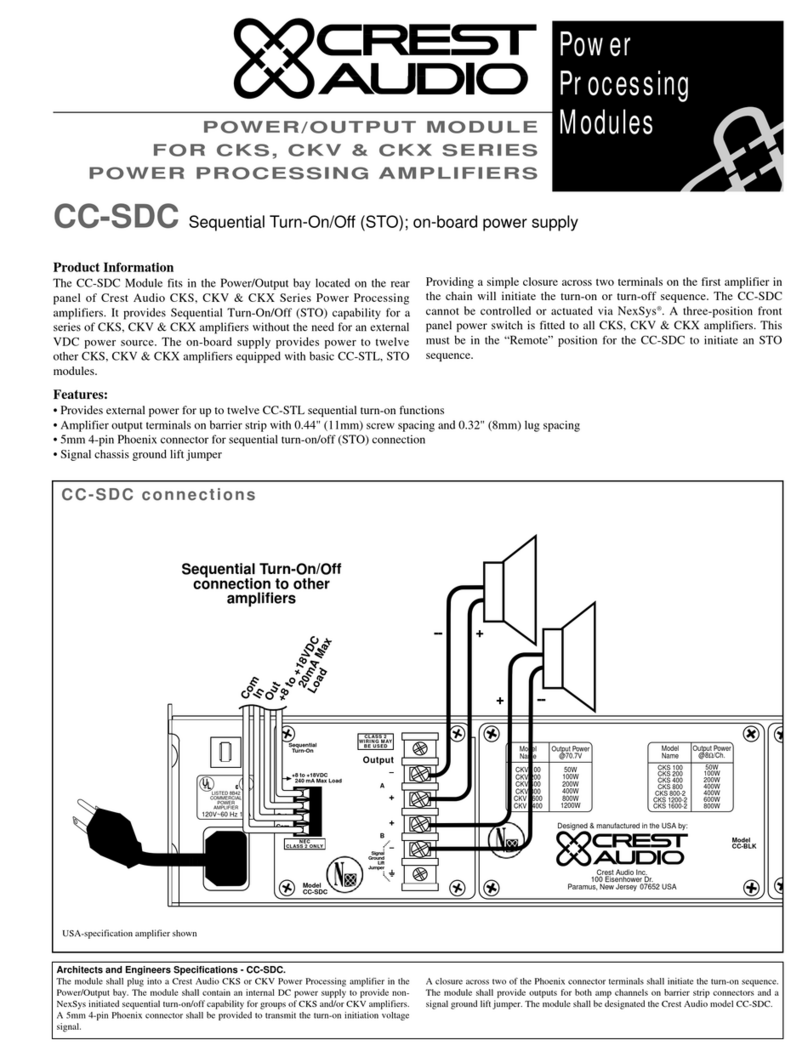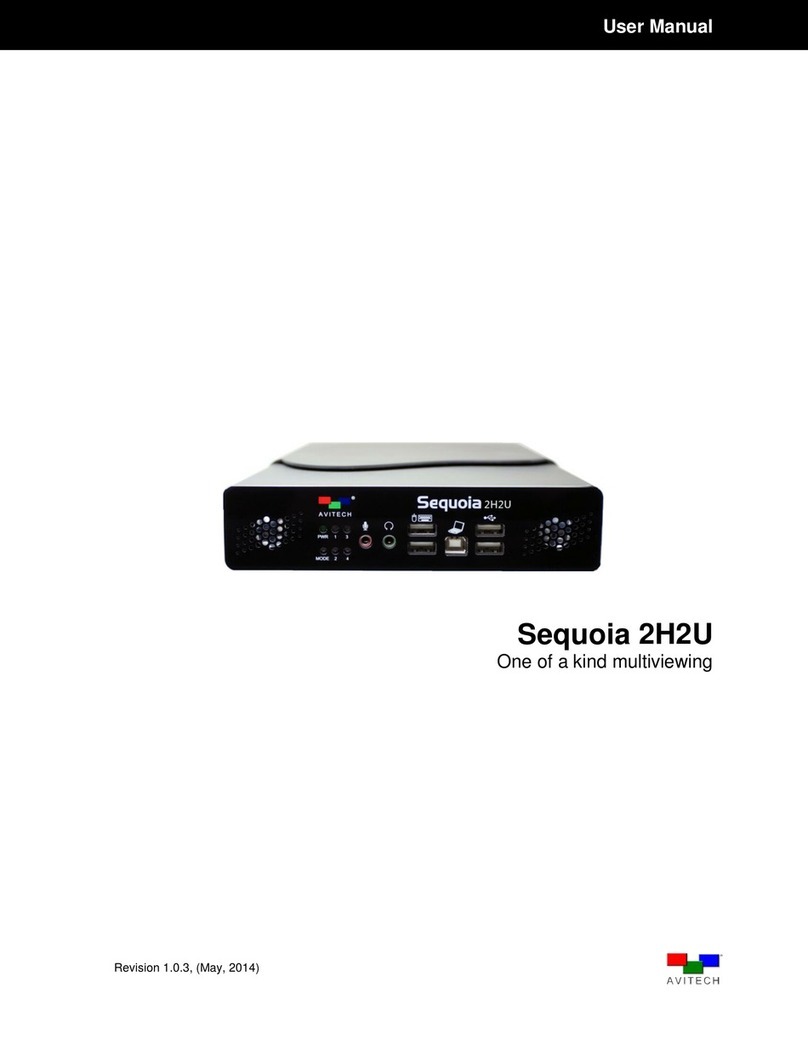tousek ST 61 User manual

Connection and installation manual
Swing gate control unit ST 61
V 3.0.001
Safety Sensor

- 2 - tousek / E_ST61_07 / 06. 06. 2019
This manual is the sole property of the TOUSEK Ges.m.b.H. and may not be made available to competitors. All rights reserved. No part of it may be reproduced without our prior
written permission. We will not accept liability for any claims resulting from misprints or errors. This edition of the manual replaces all earlier publications of the same.
Content
General warning and safety notes.............................................................................................................................. 3
1. General features, control board overview, technical data............................................................................. 4
2. Terminal assignment, connection notes ...................................................................................................... 5
3. Adjustments - overview ........................................................................................................................... 6, 7
4. Connections and adjustments ..................................................................................................................... 8
Buttons/switches....................................................................................................................................... 8, 9
Safety .................................................................................................................................... 10–13
Left leaf .......................................................................................................................................... 16
Right leaf .......................................................................................................................................... 16
Operating mode.................................................................................................................................... 16, 17
Light / Lamps .......................................................................................................................................... 18
Peripherals .................................................................................................................................... 19–21
Diagnosis .......................................................................................................................................... 22
5. Connection of radio receiver....................................................................................................................... 23
6. Initial operation .................................................................................................................................... 24–27
7. Error analysis .......................................................................................................................................... 28
8. Dimensioned drawing housing IP54........................................................................................................... 29

tousek / E_ST61_07 / 06. 06. 2019 - 3 -
EU - Manufacturer´s Declaration:
The company TOUSEK Ges.m.b.H., based in Zetschegasse 1, A-1230 Vienna/Austria, hereby declares that the
control unit ST 61 complies with the folloleaf directives:
- Low Voltage Directive 2014/35/EU, incl. changes
- Electromagnetic Compatibility Directive 2014/30/EU, incl. changes
January 2019
General warning and safety notes
• These installation and operating instructions form an integral part of the product “control unit”. They have been speci-
cally written for professional installers trained and skilled in the trade and should be carefully read in their full length before
carrying out the installation. It concerns the control only, not of the overall device “automatic gate”. After the installation
this manual has to be handed over to the user.
• Installation, connection, adjustments, putting into operation, and servicing may only be carried out by trained
professionals in full accordance with these installation and operating instructions.
• Before carrying out works on the gate system, the power supply has to be turned o.
• Before taking o the housing cover, always turn o the mains switch!
• The EU Machine Directive, laws and rules concerning the prevention of accidents, and laws and standards which are in
force in the EU and in the individual countries have to be strictly followed.
• The TOUSEK Ges.m.b.H. can not be held liable for any claims resulting from disregards of the laws and standards in
force during the installation and operation.
• The packaging materials (cardboard, plastic, EPS foam parts and lling material etc.) have to be properly disposed of
in accordance with the applying recycling and environmental protection laws. They may be hazardous to children and
therefore have to be stored out of children´s reach.
• The product is not suitable for installation in explosion-hazardous areas.
• The product may only be used in accordance with its original purpose, for which it has been exclusively designed, and
which is described in these installation and operating instructions. The TOUSEK Ges.m.b.H. rejects any liability if the
product is used in any way not fully conforming to its original purpose as stated herein.
• Children have to be instructed that the gate facility as well as the belonging parts may not be used improperly, e.g. for
playing. Furthermore handheld transmitters have to be kept in safe places and other impulse emitters as buttons and
switches have to be installed out of children‘s reach..
• Before beginning with the installation the installer has to make sure that all mechanical components of the gate facil-
ity, like carrier prole/rail, gate frame and panels, guiding elements etc. are suciently supportive and resistant for the
purpose of gate automation.
• All electrical installations have to be made in full conformity with the applying rules and laws (e.g. using a fault current
circuit breaker, proper grounding etc.).
• An all-pole disconnecting main switch with a contact opening-gap of minimum 3 mm has to be foreseen.
• After installation the proper function of the gate facility and the safety devices has to be checked!
• The TOUSEK Ges.m.b.H. rejects any liability for claims resulting from usage of the product in combination with compo-
nents or devices which do not fully conform to the applying safety laws and rules.
• Only original spare and replacement parts may be used for repair of the product.
• The installer has to inform the user about all aspects of the automatic operation of the complete gate facility, as well as
about emergency operation. The installer further has to supply to the user all instructions relating to the safe operation
of the gate facility. The installation and operating instructions also have to be handed over to the user.
Maintenance
• Maintenance works may only be carried out by qualied personnel.
• Maintenance and servicing of the complete gate facility has to be carried out according to the gate builder´s/
installer´s instructions.
• Check the proper sensitivity setting of the ARS safety reverse system once a month.

- 4 - tousek / E_ST61_07 / 06. 06. 2019
FE
–
ESC ENTER
+
Textdisplay
T
D
F1
ZM
K
B
E
VE
Control board features
1. General information Swing gate control unit ST 61
• suitable for swing gates with electromechanical operators
SWING X and SPIN 250, 230V (1 or 2 gate leafs) with inte-
grated sensor.
• leaf delay adjustable at opening and closing
• automatic closure with adjustable pause time
• travel time of both operators will be adjusted automatically
• separately adjustable softstop time of both operators
(no loss of force even with reduced speed).
• Safety system ARS (autom. reversal system)
• operating mode: impulse, automatic or dead man mode
• ntegrated evaluation of safety sensing edges
• self-monitoring of photocells
• self-diagnosis display
•
optional module: “electric lock /magnetic clamp” or “motor lock”
•
slots for optional and status display module and radio receiver
Components of the control board
(K) terminal blocks
(D) display connector
(with programming buttons +, -, ESC, ENTER)
or
TC/TSI-
connection (optional
„tousek-connect“/
„tousek service Interface“)
(E) System connector for optional module motor lock or
electric lock / magnet (page 20)
(VE) 230V a.c. for electric lock/magnet module
(B) system connector
(FE) slot for optional radio receiver (page 23)
(ZM)
slot for optional module „status display“(
page
19)
(T) transformer
(F1) fuse 6,3A F
Control board overview
Technical data
Swing gate control unit ST 61
power supply 230V a.c., +/-10% 50Hz magnetic clamp output optional 24Vd.c.
motor output 2 x 500W, 230V a.c. ambient temperature - 20°C bis + 70°C
ashing light output 230V AC, 40W protection class IP54
electric lock output optional 12Vd.c. oder 24V d.c. speed sensor
photocell output 24V a.c. art.number 12111670
optional components pluggable radio receiver • additional module for courtyard/control lamp • Additional module for
gate status evaluation
• E-lock/magnet module • radio transmission system TX 310
Attention
During connection,
adjustment and mainte-
nance works please take
care, that the electronic
circuit board won´t be
damaged by moisture
(rain).
Important
The optional „tousek-
connect“ or the „tousek-
service interface“ must
be connected with
socket (D)!Not with (E) !

tousek / E_ST61_07 / 06. 06. 2019 - 5 -
2. Terminal assignment Swing gate control unit ST 61
supply of photocell
transmitter
supply of photocell receiver
or accessories, max. 0,3A
common photocell
inner photocell contact
outer photocell contact
capacitator for left
motor
capacitator for right
motor
grounding
power supply
230V a.c.
ashing light 230V,
max. 40W
brown
blue or grey
black
green/yellow
brown
blue or grey
black
green/yellow
motor (left leaf)
grounding
motor (right leaf)
grounding
common
STOP-button
IMPULSE- switch
common
CLOSE-button
PEDESTRIAN button
common safety edge
safety edge 1 (8,2kOhm)
safety edge 2 (8,2kOhm)
transmitter
rotational speed sensor +
sensor signal 1 (left leaf)
rotational speed sensor –
rotational speed sensor +
sensor signal 2 (right leaf)
rotational speed sensor –
1
2
3
1
2
3
receiver
30 31 32 30 33 34 50 52 53 20 21 22 23 24 25 26 27 0 1 210 11
41 42 43 44 45 46 48 80 81 82 83
Warning
• Before taking o the control cover,
the main switch must be turned o !
• The inside of the control unit is under tension when
power supplied.
• In order to avoid electrical strokes, the safety regula-
tions have to be respected.
• The device may only be connected by qualied per-
sonnel (specialised sta).
• The product is not suitable for installation in explosion-
hazardous/explosive areas.
• An all-pole disconnecting main switch with a contact
opening gap of min. 3 mm has to be foreseen. The
gate facility has to be secured according to the valid
safety regulations!
• IMPORTANT: The control lines (sensor, buttons, radio,
photocells, etc.) have to be laid separately from the
230V lines (supply line, motors, signal lamp).
The stop input has no emergency stop function! - In order to ensure the emergency stop function, provide
the supply line with an all-pole disconnecting emergency stop switch, that locks after actuation!

- 6 - tousek / E_ST61_07 / 06. 06. 2019
–
ESC ENTER
+
Display
• The programming menu is divided into „BASIC SETTINGS“ and the „MENU CONTROL“.
BASIC SETTINGS
• When programming the control the rst time, you enter the „BASIC SETTINGS“.
• Here the necessary adjustments for operation of the gate facility are made.
• Entering the menu control (for extended programming) is possible by selecting „MENU CONTROL“
MAIN MENU CONTROL
• The next time you will directly enter „MENU CONTROL“. (The BASIC SETTINGS are skipped.)
• The menu control contains all possible adjustments.
In the folloleaf the single menu points are marked as shown below:
= possible adjustment (or value assignment) = factory setting = status display
Gmarks the menu points which are contained in the BASIC SETTINGS
Programming buttons Adjustments - Overview
• The adjustment (programming) of the operating parameters is carried out via four programming buttons and
the text display.
• Before you can start programming, select the language of the display. You can do this by pressing the + or -
and choose the language for the menuas and press ENTER.
• Note: The language setting can be changed any time by pressing the ESC button for 5s.
•
Before you can start programming, you have to select the operator (SWING X or SPIN 250).
• The text display informs you on the operating modes,
selected menus and adjustment of several parameters.
• The programming of the control is done through four but-
tons (+, -, ENTER and ESC).
• Scrolling through the dierent menu points (up/down) and
changing a parameter (increase/decrease) is done with
buttons + and - .
AUTO-COUNT: When a button is pressed and held, an
automatic scrolling of the menu (or change of the param-
eter) is carried out.
• By pressing the ENTER-button you enter the displayed
menu point or memorise the shown value of a parameter.
• By pressing the ESC-button you return to the superior menu point. Changed adjustments of a parameter are rejected
with this button (the original value is kept).
• AUTO-EXIT: If during programming no button is actuated for 1 minute or longer, the programming mode is left automati-
cally. The control is set „ready“ without storage of possibly changed values.
Programming menu Adjustments - Overview
3. Adjustments - overview Swing gate control unit ST 61

tousek / E_ST61_07 / 06. 06. 2019 - 7 -
Main layer Sub layer Adjustments
buttons/switches
page 8, 9
Gimpulse button OPEN/STOP/CLOSE
OPEN/CLOSE/OPEN
OPEN
DEAD MAN
*) if impulse button is
set to DEADMAN, then
the pedestrian and
close button are also
set automatically to
DEADMAN mode.
(not selectable under
„pedest.- button“)
pedestrian button OPEN/STOP/CLOSE
OPEN/CLOSE/OPEN
OPEN
Impulse OPEN
DEAD MAN *)
safety
page 10–13
Ginner photocell active
not active
Gouter photocell active
not active
Gmain safety edge 1 active
not active
radio edge TX310
Gmain safety edge 2 active
not active
radio edge TX310
photocell function inside during closing reverse
stop - after release open
during opening stop - then open
photocell function outside during closing reverse
stop - after release open
PHC-pause time no inuence of photocell
abort pause time
re-start of pause time
immediate close after opening
PHC-self test active
not active
left leaf
page 16
Gmotor (left) motor ON
motor OFF
no left operator:
> Motor OFF !
Gdelay left leaf opening delay
closing delay
Gdelay time left 0...25s = 2s
ARS response time 0,15...0,95s [increment: 0,05] = 0,50s
max. force 20...100% = 70%
soft stop time 0...25s = 5s
soft start not active active only with SWING X !
right leaf
page 16
Gmotor (right) motor ON
motor OFF
no right operator:
> Motor OFF !
Gdelay right leaf opening delay
closing delay
Gdelay time right 0...25s = 2s
ARS response time 0,15...0,95s [increment: 0,05 ] = 0,50s
max. force 20...100% = 70%
soft stop time 0...25s = 5s
soft start not active active only with SWING X !
operating mode
page 16, 17
impulse logic stop, start of pause time
impulse suppression when opening
pause time extension
Goperating mode impulse mode
automatic 1...255s [increment: 1]
partial opening 25...100% = 100%
automatic mode complete/partial opening
only complete opening
only partial opening
pause time logic no inuence
permanent open in automatic mode
closing edges left/right
inside/outside
limit tolerance 3...20 = 20
lights/lamps
page 18
prewarning OPEN OFF, 1...30s = OFF
prewarning CLOSE OFF, 1...30s = OFF
courtyard lamp 1 OFF, 5...950 = OFF
control lamp 1 illuminates during open and close
blinks slowly / illuminates / blinks
illuminates in open position
peripherals
page 19–21
electric lock switched o
1...10s
visible only
if activated under „locking“
reverse stroke
reverse stroke only with active locking!
switched o
0,5...8s
additional module courtyard/control lamp
status display 1
status display 2
locking e-lock/magnetic clamp
motor lock
motor lock OPEN and CLOSE
only OPEN
only CLOSE
visible only
if activated under „locking“
diagnosis
page 22
status display status display
delete position NO
YES
factory setting NO
YES
software version show software version
serial number show serial number
1) The menu points courtyard lamp and control lamp will only appear on display if in menu
„Additional module“ courtyard lamp/control lamp is selected.
Swing gate control unit ST61
+
–
Menu structure Adjustments - overview
ESC ENTER
Note: some adjustments regarding function or operating logic can only be executed if gate is closed and if the display shows „ready“.

- 8 - tousek / E_ST61_07 / 06. 06. 2019
Push buttons, key switches or external radio receivers with potential-free contacts can be used as impulse
switches.
• For some menu points e.g. stop-button, photocells and safety sensing edges, the status of the according input as well as
the terminal numbers are shown on the text display.
• A general status display of all inputs is available in menu DIAGNOSIS/STATUS DISPLAY.
The single menu points are marked as shown below:
= possible adjustment (or value assignment) = factory setting = status display
Gmarks the menu points which are contained in the BASIC SETTINGS
GImpulse button (terminals 30/32) Buttons/switches
OPEN/STOP/CLOSE successive impulses (factory setting): an impulse of the impulse switch makes the motor start
opening/closing. If the impulse switch is actuated again during this opening-/closing movement, the motor stops. With the
next command of the impulse switch the motor moves in the opposite direction of the last gate movement
OPEN/CLOSE/OPEN successive impulses: an impulse of the impulse switch makes the motor start opening/clos-
ing. If the impulse switch is actuated again during this opening/closing movement, the travel direction is reversed.
•In this operation mode it is not possible to stop the motor with the impulse switch – it always
moves until reaching an end position. (Opened or closed position).
• for the function OPEN/CLOSE/OPEN we strongly suggest the installation of a photocell!
OPEN: Only opening commands are accepted by the impulse switch – closing the gate with the impulse switch is not
possible.
DEAD MAN: The motor opens as long as the impulse switch is pressed (hold) – closing the gate with the impulse
switch is not possible. As soon as the switch is released, the motor stops. If hold to run operating mode is selected,
the radio receiver slot (FE) is set out of order for reasons of safety.
• If the impulse switch is set to DEAD MAN operation, then the pedestrian button works the same way.
With the impulse switch or the pedestrian button the gate is opened, with the CLOSE-button it is closed.
• IMPORTANT: Do not put into operation in dead man mode.
Select only after putting into operation (page 24), if desired.
Buttons/switches Connections and adjustments
4. Connections and adjustments Swing gate control unit ST 61
Warning
• Before taking o the control cover, the
mains switch must be turned o!
• If the control is power supplied, its inner part is under
tension.
• In order to avoid electrical strokes, the safety regula-
tions have to be kept.
• The device may only be connected by trained profes-
sionals.
• The product is not suitable for installation in explosion-
hazardous areas.
• An all-pole disconnecting mains switch with a contact
opening gap of min. 3 mm has to be foreseen. The
gate facility has to be secured according to the valid
safety regulations!
• IMPORTANT: The control lines (sensor, buttons, radio,
photocells, etc.) have to be laid separately from the
230V lines (supply line, motors, signal lamp).

tousek / E_ST61_07 / 06. 06. 2019 - 9 -
CLOSE-button (terminals 30/33) Buttons/switches
• A command with the CLOSE-switch engages closing of gate. In deadman mode the gate closes as long as the
CLOSE-switch is pressed/switched. As soon as switch is released the gate movement stops.
As CLOSE-buttons you may use pushbuttons or key switches as well as external radio receivers with potential
free make contacts can be used.
STOP-switch (terminals 30/31) Buttons / switches
• when pressing the stop switch the gate stops in any desired position.
As stop switch a break contact has to be used.
If no stop switch is connected, terminals 30/31 have to be wire-bridged.
31
30
The stop input has no emergency stop function! - In order to ensure the emergency stop function, provide
the supply line with an all-pole disconnecting emergency stop switch, that locks after actuation!
Push buttons, key switches or external radio receivers with potential-free contacts can be used as pedestrian
button.
Pedestrian button (terminals 30/34) Buttons/switches
OPEN/STOP/CLOSE successive impulses:
An impulse of the pedestrian button makes the according gate leaf open/close. If the pedestrian button is actuated
again during this movement, the motor stops. With the next impulse the motor moves in opposite direction of the last
gate movement.
OPEN/CLOSE/OPEN successive impulses:
A command of the pedestrian button makes the according gate wing open/close. If the button is actuated again during
this movement, the travel direction is reversed.
•In this operation mode it is not possible to stop the motor with the pedestrian button – it always
moves until reaching an end position. (Opened or closed position).
• for the function OPEN/CLOSE/OPEN we strongly suggest the installation of a photocell!
OPEN: Only opening commands are accepted by the impulse switch – closing the gate with the impulse switch is not
possible.
Impulse OPEN: The contact at terminals 30/34 works as a second impulse button with the xed adjustment „OPEN“.
A command with the pedestrian button effects a complete opening of both leaves when the
adjustment “Impulse OPEN” is selected.
DEADMAN: The motor opens as long as the impulse switch is pressed (hold) – closing the
gate with the impulse switch is not possible. As soon as the switch is released, the motor stops.
If hold to run operating mode is selected, the radio receiver slot (FE) is set out of order for reasons of safety.
The DEADMAN function can not be chosen actively but is set automatically as soon as the impulse
button is set to DEADMAN mode.

- 10 - tousek / E_ST61_07 / 06. 06. 2019
Ginner photocell (contact: terminals 45/46) Safety
active: to be selected, if inner photocell should be triggered.
not active: to be selected, if inner photocell should not be triggered.
Safety Connections and adjustments
Gouter photocell (contact: terminals 45/48) Safety
active: to be selected, if outer photocell should be triggered.
not active: to be selected, if outer photocell should not be triggered.
Important: notes for photocells
Photocell connection:
• The control unit has a power supply connection for a
24V a.c. photocell (PHC)
Versorgung: PHC-transmitter: terminals 41/42
PHC-receiver: terminals 43/44
Note: in „gate closed“ position the terminals 41/42 are being switched
into energy saving mode (no current) (only if the radio transmission
system TX 310 is not used) !
• At supplied and positioned photocells the contact has to be closed
(make contact).
PHC contacts: inside = term. 45/46, outside = term. 45/48,
back area = With additional inner photocells the back area of the gate
can be monitored. (All inner photocells are then set in series at control
terminals 45/46 (terminals for inner photocells).
Mounting notes (SYNC function):
IMPORTANT: When using two pairs of photocells please do not install
both photocell transmitters/receivers on the same side (to eleminate
interference between both) !
Exception: photocells with SYNC function allow the installation of
both photocell transmitters/receivers on the same side without causing
interference to each other.
Self-monitoring of photocells:
The control unit has a monitoring function for the connected photocells. A test will be triggered by each impulse and will be
checked if the receiver of the photocell responds to the signal from the photocell transmitter.
If there is no communication
between the photocell receiver and transmitter the control unit responds with an error.
The deactivation of the self-test function is only permitted if the safety installations correspond to the
category 3 !
Photocell functions:
The exact function of the photocells depends on the programming of the control unit:
see menu point SAFETY/inner (outer) photocell function, resp. photocell with pause time ( page 13).
Detailed information you will nd in the corresponding photocell manual.
1
2
3 3
left right
INSIDE
(1) inner photocell
(2) outer photocell
(3) back area photocell
Standard
transmitter 1 receiver 1
receiver 2 transmitter 2
mit SYNC
ransmitter 1 receiver 1
ransmitter 2 receiver 2

tousek / E_ST61_07 / 06. 06. 2019 - 11 -
Important
• To activate the SYNC-function, the
plug-in bridges (J) in both photocell
transmitters have to be removed.
(see manual LS 180).
SYNC
J
Outer photocell
Tousek LS 180 as safety device
Outer and inner photocell
Tousek LS 180 as safety device
transmitter receiver
transmitter receiver
OUTSIDE:
INSIDE:
transmitter receiver
with active SYNC-function
Photocells - connection examples
Important
• Jumper J of transmitter and receiver has to be
adjusted in the same way.
Outer photocell
Tousek LS 26 as safety device
Outer reective photocell
Tousek RLS 620 as safety device
N.O.
COM
N.C.
N.O.
COM
N.C.
N.O.
COM
N.C.
48
45
44
43
42
41
46
+
~
-
~
12/24V
J
+
~
-
~
12/24V
NC C NO J
transmitter receiver
48
45
42
41
46
44
43
24Va.c.
12–240V
a.c./d.c.

- 12 - tousek / E_ST61_07 / 06. 06. 2019
•
Connection and detailed information of radio transmission system TX 310 see according manual.
Safety sensing edges Safety
Gmain safety edge 1 (terminals 50/52) Safety
active: to be selected if the contact strip (8,2kOhm) of main safety sensing edge 1 should be evaluated.
not active: to be selected if the contact strip of main safety sensing edge 1 should not be evaluated
radio edge TX310: to be selected if safety sensing edge (8,2kΩ) of main entrance edge 1 should be evaluated with
the radio transmission system TX 310.
Gmain safety edge 2 (terminals 50/53) Safety
active: to be selected if the contact strip (8,2kOhm) of main safety sensing edge 2 should be evaluated.
not active: to be selected if the contact strip of main safety sensing edge 2 should not be evaluated
radio edge TX310: to be selected if safety sensing edge (8,2kΩ) of main entrance edge 2 should be evaluated with
the radio transmission system TX 310.
Safety sensing edges (main closing edge 1 + 2)
• OBSTACLE DETECTION: when a contact strip/safety edge is triggered/activated then a change of direction is
eected for 1 second. Then the gate stops.
• The activation of the safety sensing edges is made in menu „Safety / main closing edge 1“ (term. 50/52) and
„Safety / main closing edge 2“ (term. 50/53)
• If in the menu item „operating logic / closing edge“
(page 17) one of the modes „left / right“ or „inside
/ outside“ is selected - this results in the wiring of the
safety contact edges to make with each other and the
connection to the control terminals.
Safety sensing edges in mode „left/right“, that should react on an obstacle at the left (right) leaf, have to
be connected (serially) to the connection clamps of the main closing edge 1 (2) .
Safety sensing edges in mode
„inside/outside“, which should react
on an obstacle at the inner
(outer)
side of the leaf,
be connected (serially) to the connection clamps of the main closing edge 1 (2)
Example: W 8,2kΩ nal resistance
E nal edge
D passage edge
S to the control board
When connecting one safety edge a nal edge (1) has to be used.
main closing edge 2
(right leaf or outside)
main closing edge 1
(left leaf or inside)
8,2kOhm
8,2kOhm
53
52
50
HSK 2
HSK 1
E
W
D D S
50
52
50
53
main closing edge 1
main closing edge 2
Important
• After giving the impulse to program the end positions, no other impulse must be given. Also the safety devices
mustn´t be triggered. This would lead to an interruption of the programming process.
• Therefore, the mechanical stops must be set so that the existing contact strips cannot be triggered.

tousek / E_ST61_07 / 06. 06. 2019 - 13 -
Photocell function inside Safety
during closing reverse: an interruption of the photocell during closing makes the gate reverse (open). In automatic
mode the gate closes as soon as the pause time has run out. In impulse operation another closing command has to
be given.
stop - after release open: an interruption of the photocell beam during opening or closing makes the motor stop as
long as the photocell stays interrupted. After release of the photocell, the gate opens. In automatic mode the gate closes
as soon as the pause time has run out, in impulse operation another closing command has to be given.
during opening stop - then open: an interruption of the photocell during opening makes the motor stop as long as
the photocell stays interrupted. After release of the photocell, the gate opens (back area monitoring). In automatic mode
the gate closes as soon as the pause time has run out, in impulse operation another closing command has to be given.
Photocell function outside Safety
during closing reverse: an interruption of the photocell during closing makes the gate reverse (open). In automatic
mode the gate closes as soon as the pause time has run out. In impulse operation another closing command has to
be given.
stop - after release open: an interruption of the photocell beam during opening or closing makes the motor stop as
long as the photocell stays interrupted. After release of the photocell, the gate opens. In automatic mode the gate closes
as soon as the pause time has run out, in impulse operation another closing command has to be given.
PHC-pause time Safety
no inuence of photocell: the photocell doesn’t have any inuence on the pause time in automatic mode.
abort pause time: in automatic mode an interruption of the outer photocell during pause time shortens the pause time.
After release of the photocell the gate starts closing.
re-start of pause time: in automatic mode an interruption of the outer photocell during pause time, restarts the pause
time. As soon as the pause time has run out, the gate closes.
immediate close after opening: If the outer or inner photocell is interrupted during the opening movement or if the
outer photocell is interrupted in open position, then the gate begins to close after the release of the photocell.
PHC-self test Safety
active: photocell self-test is executed with an opening impulse (switch, button) in gate position „closed“.
not active: photocell self-test is not executed
Attention
• The photocell self-test can only be deactivated by selecting „not active“.
• The deactivation of the self-test function is only permitted if the safety installations correspond to the
category 3 !
PHOTOCELLFUNCTIONS Safety

- 14 - tousek / E_ST61_07 / 06. 06. 2019
Motor condensers
connection and attachment
• ATTENTION: switch o the control unit before
connecting the condensers !
• 2 condensers have to be connected to the ST61
as follows: left operator: clamps 80/81, right operator:
clamps 82/83 (see connecting diagram above)
• To x the 2 condensers inside the operator housing please
use the sockets. After having mounted the condensers
with the lace to the sockets they should be xed on the
inside of the operator´s control housing.
• The placement of the condensers can be chosen freely,
but we recommend the lower area of the operator control
housing, as shown on picture. (see right picture)
torque sensor –
signal 2 (RIGHT)
torque sensor +
torque sensor –
signal 1 (LEFT)
torque sensor +
3
2
1
3
2
1
ML
MR
26
25
24
22
21
20
83
82
81
80
black
blue or grey
brown
green/yellow
black
blue or grey
brown
green/yellow
condenser
right motor
condenser
left motor
27
23
Motor left Motor right
Danger
•
Before connection work or taking o the housing cover, the power supply has to be turned o !
• All electrical installations (control panels, safety devices, impulse switches and buttons) and force adjust-
ments (see menu: left left / right leaf) have to be made in full conformity with the applying rules and laws!
also follow safety instructions on page 5 !
Important: notes for connection and adjustment of operators
• It is possible to connect 2 motors 230V (max. 500W/motor) with control ST61.
• Attention: Before carrying out any connection works, the power supply of the gate facility has to be turned o.
• Operators´ power supply and sensor cables as well as the capacitors must be connected to the ST 61 control unit
acoording to the installation manual. The sensor signal denes the performance/response when hitting an obstacle or
when reaching a gate end position (adjustment of sensor sensibility please see menu “left (right) wing”.
• Note that after turning on the power supply and giving an impulse the gate leaves open.
If this is not the case then the terminals 20/22 of the left motor or the terminals 24/26 of the right motor have to be inter-
changed.
• Important: for operation with one motor/operator please deactivate the other one by choosing “MOTOR OFF” !
The adjustments in the menu LEFT (RIGHT) LEAF/OPERATOR „Motor ON or OFF“ must match the
actual motor connection on the control unit terminals.
CONNECTION OF MOTORS Connections and adjustments
Motor and sensor wires
• The motor and sensor wires must be supplied to the control unit in 2 separate tubes
or a cable channel with partition.
• The sensor wire must not exceed the max. length of 50m ! - For lengths of more than 20m shielded control
lines must always be used. The shield must be clamped together with the cable number 3 (terminal 68)
• If sensor wires with more than 3 cables are used the remaining cables must be clamped together with the cable
number 3 (terminal 68) - do not clamp to a ground wire (earth lead)!
•
When connecting the sensors to the control unit please note the labeling/marking of the cables (number 1–3).
Bad connection leads to destruction !

tousek / E_ST61_07 / 06. 06. 2019 - 15 -
CONNECTION of operators to control unit
Connection cable with
colour or number
left operator
to terminal
right operator
to terminal
(M)
power supply
brown 20 24
blue or grey 21 25
black 22 26
green/yellow 23 27
(S)
sensor
165 65
266 67
368 68
SWING X INSIDE SWING X
left right
2
1
3
yellow/
green
black
blue
brown
3
2
1
S
M
Motor line (M)
to control unit
Sensor line (S)
to control unit
to control unit
SPIN 250 terminals Steuerungsklemmen
number / colour left operator
to terminal
right operator
to terminal
(M)
power supply
4 brown 20 24
5 blue or grey 21 25
6 black 22 26
green/yellow 23 27
(S)
Sensor
1 red 65 65
2 blue 66 67
3 black 68 68
Connection SPIN 250
Connection SWING X
32
1
IMPORTANT!
separate tubes or a cable channel with partition!
SPIN 250 INSIDE SPIN 250
left right

- 16 - tousek / E_ST61_07 / 06. 06. 2019
Right leaf Connections and adjustments
GMotor (Supply: terminals 24/25/26, grounding: 27 - Sensor: terminals 65, 67, 68) Right leaf
MOTOR ON
MOTOR OFF.left motor right motor
INSIDE
If a right operator is not available then
set here to „MOTOR OFF“!
GDelay right leaf Right leaf
OPENING DELAY: the right leaf opens after the adjusted delay time.
CLOSING DELAY: the right leaf closes after the adjusted delay time.
GDelay time right 2s (factory setting) Right leaf
0–25s time delay adjustable: indicates the delay time at opening or closing.
ARS response time 0,50 (factory setting) Right leaf
0,15–0,95 adjustable: indicates the response of the Automatic Rerversal System.
Max. force 70% (factory setting) Right leaf
20–100% adjustable: indicates the motor force in opening/closing movement.
Soft stop time 5s (factory setting) Right leaf
0–25s adjustable: indicates the duration of the soft stop time.
Soft start Right leaf
not active
active: soft start with SWING X.
The option „soft start“ is only inserted for
SWING X. With SPIN operator soft start is
always active!
Impulse logic Operating logic
stop, start of pause time: a command of the impulse switch during the opening movement stops the gate and starts
the pause time in automatic operation – as soon as the pause time has run out, the gate closes automatically.
impulse suppression when opening: commands which are emitted during the opening movement are suppressed.
Commands during closing are accepted.
pause time extension: an impulse in automatic operation restarts the pause time. If this menu point is chosen, the
impulse suppression during opening is active at the same time.
Operating mode Connections and adjustments
Left leaf Connections and adjustments
GMotor (Supply: terminals 20/21/22, grounding: 23 - Sensor: terminals 65, 66, 68) Left leaf
MOTOR ON
MOTOR OFF.left motor right motor
INSIDE
If a left operator is not available then set
here to „MOTOR OFF“!
GDelay left leaf Left leaf
OPENING DELAY: the left leaf opens after the adjusted delay time.
CLOSING DELAY: the left leaf closes after the adjusted delay time.
GDelay time left 2s (factory setting) Left leaf
0–25s time delay adjustable: indicates the delay time at opening or closing.
ARS response time 0,50 (factory setting) Left leaf
0,15–0,95 adjustable: indicates the response of the Automatic Rerversal System.
Max. force 70% (factory setting) Left leaf
20–100% adjustable: indicates the motor force in opening/closing movement.
Soft stop time 5s (factory setting) Left leaf
0–25s adjustable: indicates the duration of the soft stop time.
Soft start Left leaf
not active
active: soft start with SWING X.
The option „soft start“ is only inserted for
SWING X. With SPIN operator soft start is
always active!

tousek / E_ST61_07 / 06. 06. 2019 - 17 -
main closing edge 2
(right leaf or outside)
main closing edge 1
(left leaf or inside)
8,2kOhm
8,2kOhm
53
52
50
HSK 2
HSK 1
GOperating mode Operating logic
impulse mode: for initiating the closing movement, an impulse is necessary.
automatic closing, pause time adjustable from 1-255s: gate closes as soon as the adjusted pause time has run out.
Partial opening 100% (factory setting) Operating logic
25–100% adjustable: indicates the partial opening of the gate leaf with closing delay in relation to complete opening
width.
This adjustment is ONLY adopted in CLOSED Postion.
Automatic mode Operating logic
complete/partial opening: either with complete as well as partial opening, the gate closes automatically after the
adjusted pause time.
only complete opening: only after complete opening, the gate closes automatically after the adjusted pause time.
only partial opening: only after partial opening the gate closes automatically after the the adjusted pause time.
Pause time logic Operating logic
no inuence
permanent open in automatic mode: if this function is activated, the control unit goes from automatic mode into impulse
mode with activated pause time through impulse in open gate position for this cycle , hence if gate is open then an
impulse will end the automatic mode - the gate remains open. Only the next impulse will close the gate and the control unit
goes back to automatic mode. With this function e.g. the entrance to a company site can remain open during the day (1st
impulse in gate open position) and closed in the evening (2nd impulse). The control board switches back to automatic mode
(autom. opening and closing of gate).
If the gate is in partial open position and „permanent open in automatic mode“ is selected, so it is possible to adjust
permanent partial open for this cycle by giving an impulse via pedestrian button. Permanent partial open can be
nished analogous to the above described method.
Closing edges (HSK 1: terminals 50/52, HSK 2: terminals 50/53) Operating logic
left/right: the safety sensing edges (contact strips)
can actuate in every gate movement (OPEN/CLOSE) .
The safety sensing edge 1 (terminal 50/52) is mounted
on the left gate wing and the safety sensing edge 2
(terminal 50/53) on the right wing.
inside/outside: sensing edges at the interior of the gate (terminal 50/52) can only actuate during opening movement
and sensing edges on the outside of the gate (terminal 50/53) only during closing movement.
IMPORTANT ! ASSIGNMENT AND RESPONSE OF SAFETY EDGES
Movement
Assignment
Open Close Examples: (D) passage edge, (E) nal edge
left (HSK 1 - Kl.50/52) right (HSK 2 - Kl.50/53)
D
E
D
E
outside (HSK 2-term.50/53)
D
E
inside (HSK 1-term.50/52)
D
E
HSK 1
Mode
left/right
left active active
HSK 2 right active active
HSK 1
Mode
inside/outside
inside active
HSK 2 outside active
Limit tolerance 20 (factory setting) Operating logic
3–20 adjustable: indicates the tolerance in the end positions (low value = sensitive behaviour).

- 18 - tousek / E_ST61_07 / 06. 06. 2019
The following two menu points can only be selected if the menu point additional menu is adjusted to „Courtyard-/Control
lamp“ (hence shown on display).
Courtyard lamp (Description add. modules page 19)Light / Lamps
OFF
5–950 adjustable: at the courtyard lamp output an external lamp can be connected (e.g. garden lamp), which can be
turned on for each opening command for the duration of adjusted time.
Control lamp (Description add. modules page 19) Light / Lamps
illuminates during open and close: The pilot lamp output is activated during opening- and closing movement.
blinks slowly/illuminates/blinks:The pilot lamp output is activated as follows: During opening the pilot lamp ashes
slowly. During pause time, in opened position or when the gate stops it is illuminated. During the closing movement
it ashes rapidly. If the gate is closed, the pilot lamp expires
illuminates in open position: Pilot lamp is illuminated as soon as the gate has reached end position open.
• Before taking o the housing cover the
main switch has to be turned o !
• Follow safety instructions (page 5) !
Warning
Important: Notes regarding
connection of a ashing light
• Attention: Before carrying out
connection works, the power
supply of the facility has to be
turned o.
• A ashing light with 230V, max.
40W can be connected at the
terminals 10/11.
Prewarning OPEN (terminals 10/11) Light / Lamps
OFF
1–30s adjustable: before each opening movement the ashing light is activated for the adjusted time..
Prewarning CLOSE (terminals 10/11) Light / Lamps
turned o
1–30s adjustable: before each closing movement the flashing light is activated for the adjusted time..
11
10
2
1
0
Light / Lamps Connections and adjustments

tousek / E_ST61_07 / 06. 06. 2019 - 19 -
Electric lock (module terminals 72/73) Peripherals
switched o
1–10s adjustable: The electric lock is activated by push button impulse or impulse from pedestrian button for a
period of time set here to ensure the release depending on the gate situation
Reverse stroke (only with activated locking!) Peripherals
switched o
0,5–8s adjustable: Only with activated lock (electric lock or motorized locking bar): After an impulse is given, a short
closing movement for unlocking (for example, the E-lock) is initiated rst, the unlocking is performed and the door is
opening. With an electric lock, the reversal stroke is only carried out in the opening direction. With a motor bolt, depend-
ing on the setting, it is possible to set the reversal stroke also in the closing movement.
Additional module Peripherals
courtyard/control lamp: the menu points courtyard lamp and control lamp are ready for adjustment (that means if not
selected, these menu points will not be shown on the display)
status display 1: with the two potential-free signal contacts K1 and K2, the gate end positions (limits) can be
evaluated.
status display 2: with the two potential-free signal contacts K1 and K2, the gate end positions (limits), the gate mo-
vement as well as a gate stop outside of the end positions can be evaluated.
Additional module (optional)
• turn o power supply before installing the additional module!
• Depending on which device, e.g. a courtyard-/Control lamp is
chosen or evaluation of gate status should be eected, the corresponding
module (Z) has to be plugged to the according slot/plug (ZM) of control board.
• Additionally the corresponding value has to be selected in menu point
„Additional module“.
Additional module
Courtyard lamp/
Control lamp
• On the terminals 12/13
a courtyard lamp (H)
can be connected:
230V, max. 100W
• On the terminals 70/71
a control lamp (K) can
be connected:
24Vd.c., max. 2W
1213 7071
L N
HK
– +
Additional module
Gate status display
• with potential free signal contacts K1 (Kl.
90/91) and K2 (Kl. 92/93) the gate staturs
can be evaluated in two ways (see menu
point „Additional module“).
• Contact load: 24Va.c./d.c., max. 10W
Function K1 K2
Gate status display
1Gate in CLOSE-Position 1 0
Gate in OPEN-Position 0 1
2
Gate in CLOSE-Position 0 0
Gate opens or closes 0 1
Gate stopped or fault
(Gate not in end position) 1 0
Gate in OPEN-position 1 1
signal contacts: 0 = open, 1= closed
9091 9293
signal contacts
K1 K2
ZM
Z
ZM
ST 61
Locking Peripherals
e-lock/magnetic clamp: with additional module electric lock/magnetic clamp.
motor lock: with additional module motorized locking bar.
Motor lock Peripherals
OPEN and CLOSE: locking via motorized locking bar in both end positions of the gate.
only OPEN: locking via motorized locking bar only in open position.
only CLOSE: locking via motorized locking bar only in closed position.
Peripherals Connections and adjustments

- 20 - tousek / E_ST61_07 / 06. 06. 2019
Optional module for electric lock/magnetic clamp
• The control unit needs an optional module for connec-
tion of an electric lock/magnet (12V or 24Vd.c. version
depending on electric lock).
Connection of module
• ATTENTION: turn o power supply!
• Fix the module as illustrated in the control with screws at
position (P1).
• Connect electric lock module via RJ-plug (E) with the
control unit.
• Connect the electric lock (12/24Vd.c.) to the removable
terminals 72/73 of the module.
• The magnet (24Vd.c.) must be connected via a resistor
(R) for the connection to the module.
• To do this, push the connecting cable of the magnetic clamp
as shown into the opening of the series resistor and x by
means of crimping pliers.
• Connect the connection cable and resistor (R), as shown,
to the removable terminals 74 (–) / 75 (+) of the module.
Pay attention to polarity.
• The supply is connected to the 2-pin connector cable (V)
to the control terminals (VE).
• After wiring, the E-lock-mode has still to be activated in
the menu of the control under LIGHT PERIPHERAL /
ELECTRIC LOCK
• Magnets are driven into the open and closed position of
the gate, the electric lock only in closed position.
P1
E
VE
72 73 7475 V
– +
electric lock
12 or 24Vd.c
magnet
24Vd.c
R
x
24V
The series resistor (R) is for tousek
magnets GD 50 and GD 70.
WARNING: • Before taking o the housing cover the main switch has to be turned o !
• Follow safety instructions! ( page 5)
optional dropbolt module
• In order to connect the dropbolt SAFELOCK to the control
unit it needs an optional modul and a dropbolt control unit.
If needed then for double leaf swing gate also two dropbolts
can be connected. Thereby the terminal block is labelled
with „X“ for the rst bolt and with „Y“ for the second bolt.
Modul connection
• ATTENTION: Turn o the power supply!
• Fix the module inside the control unit´s housing as shown
on the picture. Fix the module on the positions (P1) by
spacers and screws (included).
• Connect the modul to the control unit with RJ-plug con-
nection (E).
• Carry out the connections on the modul clamps „X“, „Y“
and on the motor control unit clamps as shown on the
picture.
• After succesful connection the dropbolt operation need to
be activated in the control unit menu („peripherials/locking“
and „peripherials/dropbolt“) ST 61 with integrated dropbolt modul
IMPORTANT: When using only one drop bolt, the wire jumper must remain in the unused terminal block!
E
P1
This manual suits for next models
1
Table of contents
Other tousek Control Unit manuals
Popular Control Unit manuals by other brands
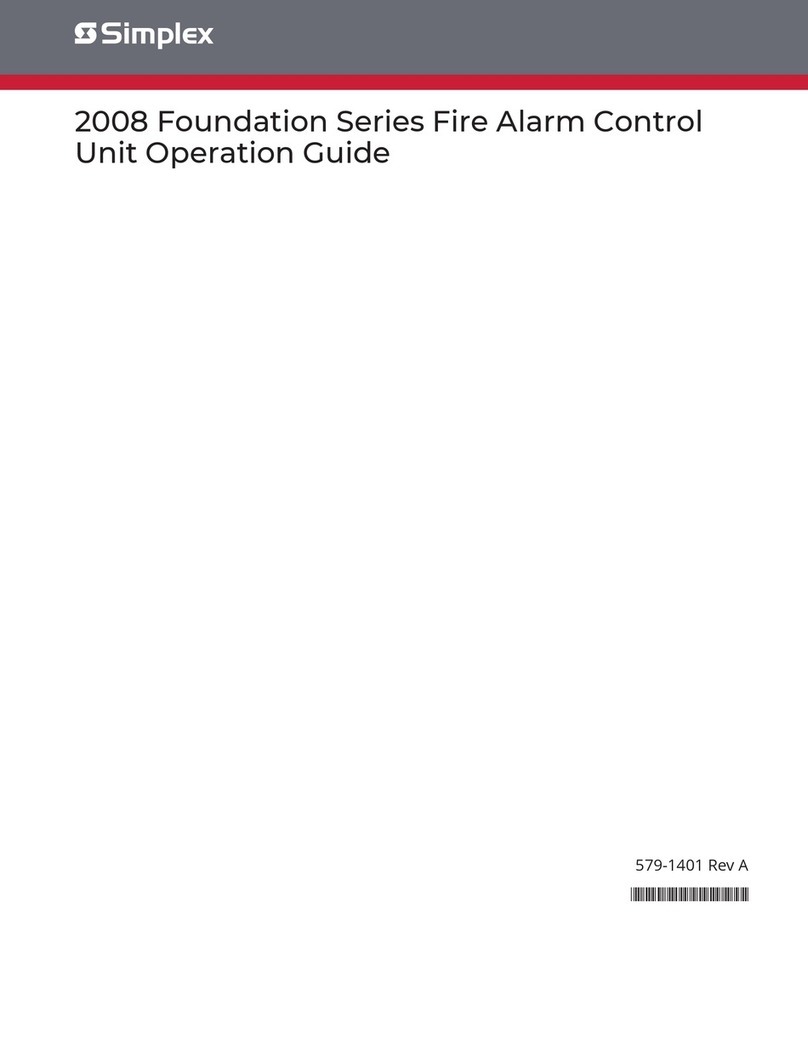
Simplex
Simplex Foundation Series Operation guide
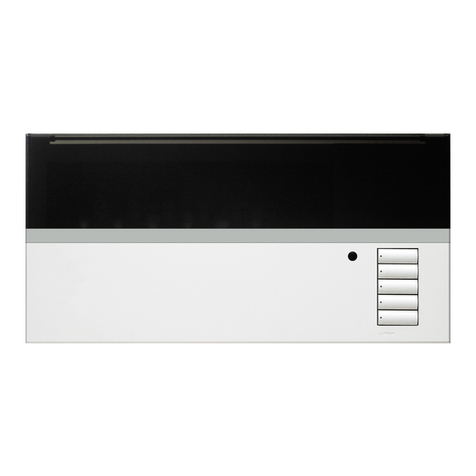
Lutron Electronics
Lutron Electronics QSGRK-6D Quick installation and operation guide

Graco
Graco Cleanshot 244162 instructions
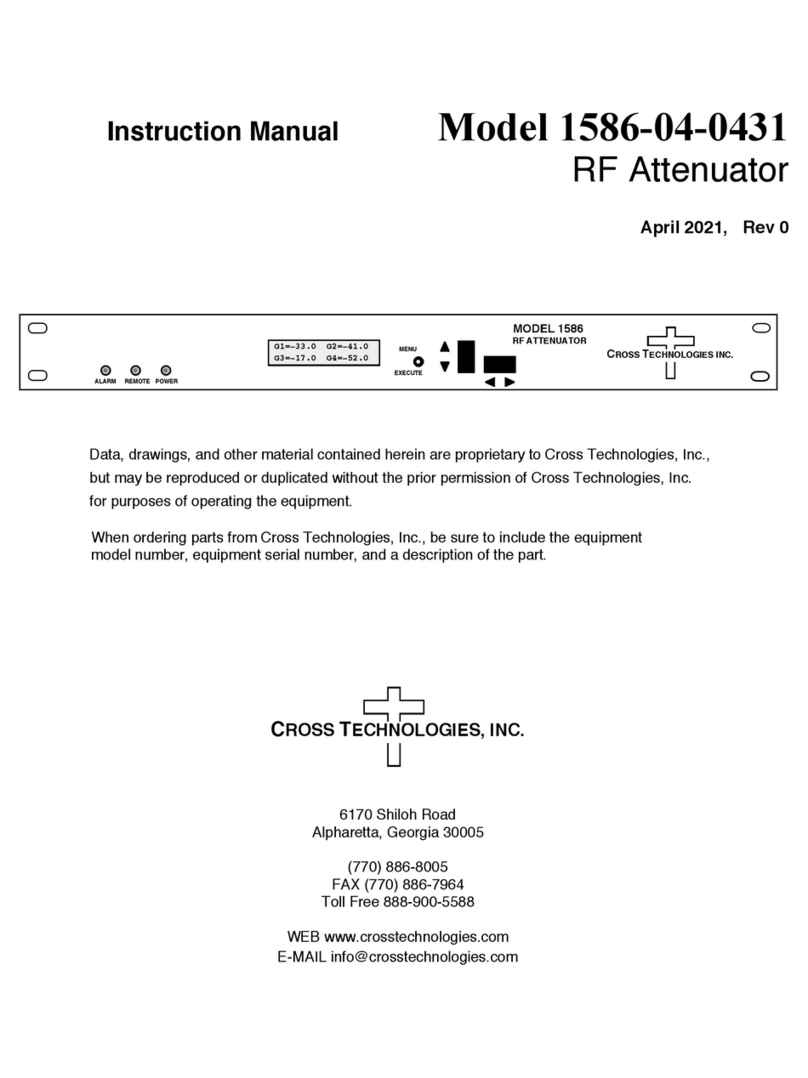
Cross Technologies
Cross Technologies 1586-04-0431 instruction manual
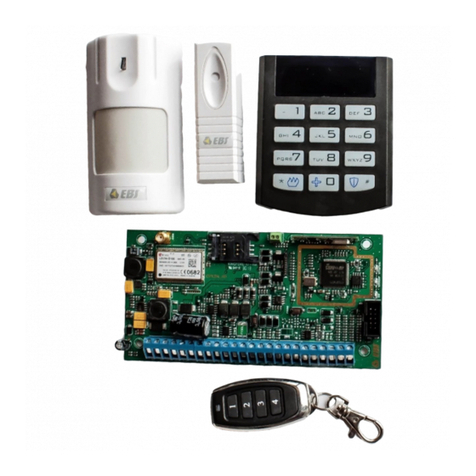
EBS
EBS CPX200NW user manual
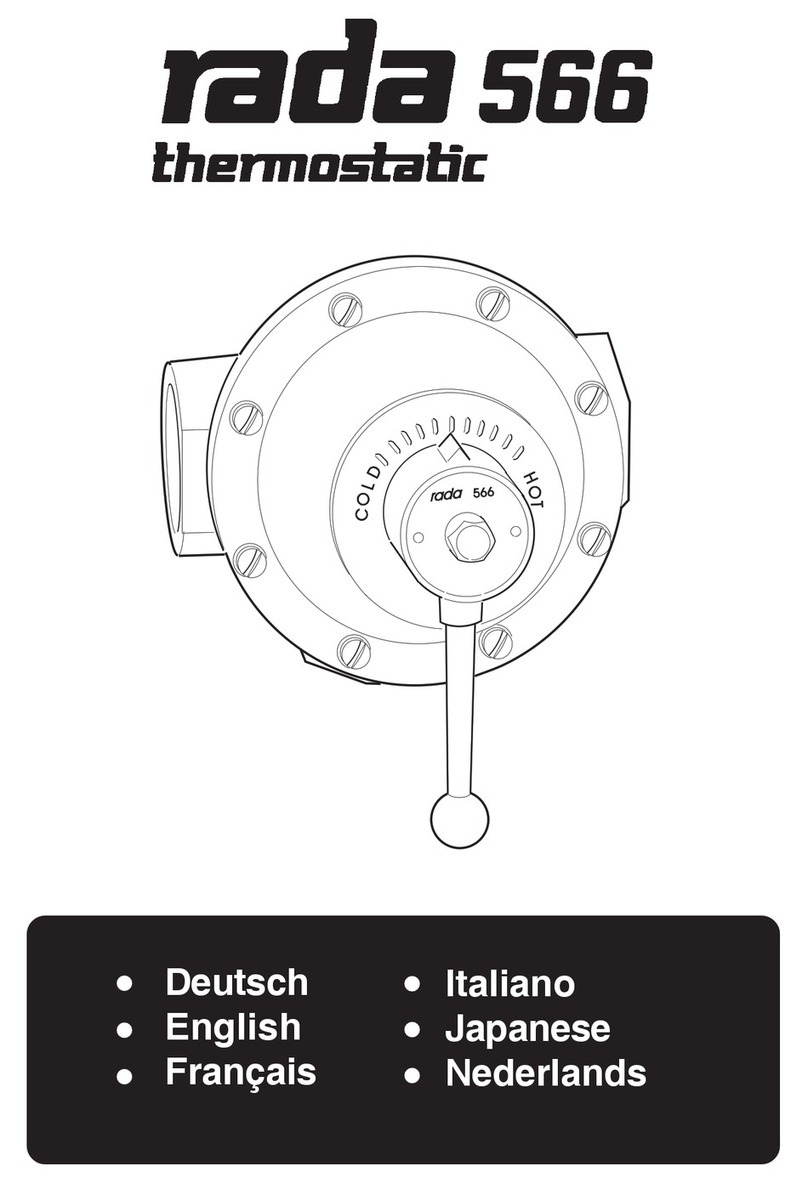
rada
rada 566 Installation and Maintenance
